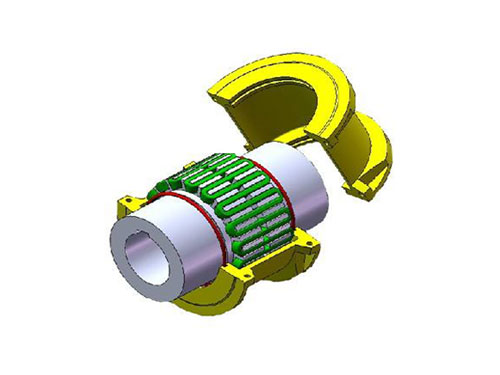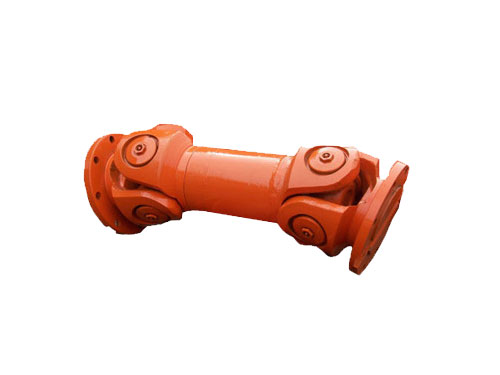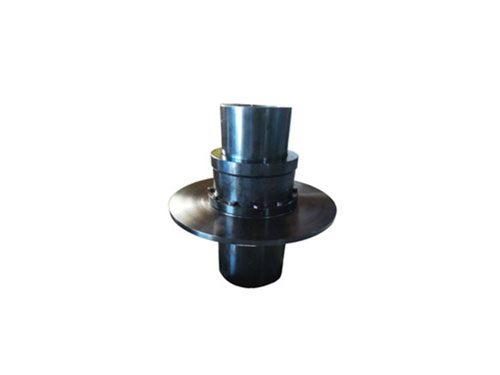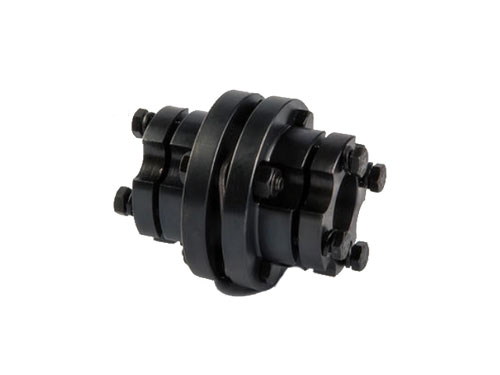 JS type housing radial mounting type couplingSelection of JS type housing radial mounting type coupling...
JS type housing radial mounting type couplingSelection of JS type housing radial mounting type coupling... WGT type gear coupling with intermediate sleeveWGT type connecting middle sleeve gear coupling is working...
WGT type gear coupling with intermediate sleeveWGT type connecting middle sleeve gear coupling is working... Universal couplingThe universal coupling uses the characteristics of its mechanism...
Universal couplingThe universal coupling uses the characteristics of its mechanism... WGP type drum gear coupling with brake discThe gear coupling is made of the same number of teeth...
WGP type drum gear coupling with brake discThe gear coupling is made of the same number of teeth... DJM expansion sleeve diaphragm couplingDJM expansion sleeve diaphragm coupling strength JZMJ type...
DJM expansion sleeve diaphragm couplingDJM expansion sleeve diaphragm coupling strength JZMJ type...Installation, disassembly and fixing method of diaphragm coupling
The diaphragm coupling compensates for the relative displacement of the two shafts connected by the elastic deformation of the diaphragm. It is a flexible coupling with a metal elastic element. It does not require lubrication, has a compact structure, a long service life, no rotation gap, and is not affected. Influence of temperature and oil pollution.
Common sense of installation and disassembly of diaphragm coupling:
XNUMX. When disassembling, please proceed with the device completely stopped; loosen the locking screws one by one.
XNUMX. Tighten the tightening torque according to the specified tightening torque.
XNUMX. Tighten the fixing screws in turn in the circumferential direction.
XNUMX. Insert the coupling into the installation shaft; if the hole diameter is too tight, be careful not to hit the installation with a hammer or hard metal.
1. After the positioning is completed, first tighten the screws with a torque wrench (the specified tightening torque 4/XNUMX) according to the diagonal direction.
1. Increase the strength (2/4 of the specified tightening torque) and repeat the fourth step.
XNUMX. Wipe clean the dust and dirt on the surface of the installation shaft, and apply a thin layer of engine oil or lubricant.
XNUMX. Clean the inner hole of the coupling and wipe it with oil or lubricant.
Precautions for installation of diaphragm coupling:
XNUMX. If there is an abnormal sound during operation, please stop the operation immediately and check the installation accuracy and screw looseness respectively. It is recommended to install the screw after the installation and debugging.
1. In order to prolong the service life of the coupling, it is recommended to set the axis deviation within 3/XNUMX of the allowable value.
XNUMX. Tighten the screws after inserting the mounting shaft, otherwise the coupling will be deformed.When tightening the screws, please use a torque wrench, do not use screws other than the accessories for installation.
XNUMX. When the shaft center deviation exceeds the allowable value during installation, the coupling may be deformed, resulting in damage or shortened service life.
XNUMX. The allowable axis deviation of the coupling includes radial, angular, and axial deviations. When installing, please adjust the axis deviation within the allowable range of the corresponding product catalog.
XNUMX. When multiple deviations occur at the same time, the corresponding allowable value should be halved.
XNUMX. Products with diaphragms have edges and may cause injuries. It is recommended to wear thick gloves when installing.
XNUMX. Please install a protective cover and other devices around the coupling to ensure that it is in place.
The diaphragm coupling is composed of several groups of diaphragms that are alternately connected to the two halves of the coupling with bolts, and each group of diaphragms is formed by stacking several pieces.The elastic deformation of the diaphragm compensates for the relative displacement of the connected two shafts. It is a flexible coupling with a metal elastic element.It is mainly suitable for low torque applications, especially in coupling encoders and other lighter instruments.For example, the connection of a servo motor and a ball screw.However, this kind of performance will increase the bearing load as the slot size increases, but in most cases, it can protect the bearing well enough.
Diaphragm couplings are one of the main types of non-lubricated couplings used in turbomachinery to transmit torque and adjust the misalignment between equipment shafts.These couplings rely on the bending of the metal film to accept angular and axial deviations.In the diaphragm coupling, the torque is transmitted radially from the outer diameter of the drive flange to the accessories at the inner diameter through one or more metal plates.The thickness of the diaphragm can be constant, it can be tapered, it can be flat, curled, or it can be spoked.The outer diameter of the diaphragm is usually fixed with bolts, and the inner diameter can be electron beam welds, splines or bolts.In a typical flange-flange connection of a diaphragm coupling, the torque mainly causes the bolt to be affected by shear stress.
The method of fixing the diaphragm coupling is shaft shoulder, collar, shaft extension and sleeve.Round nuts, shaft end retaining rings, shaft shoulders, collars, and shaft extensions are characterized by simple structure, positioning, and large axial force. They are often used for positioning gears, sprockets, belt wheels, couplings, and bearings.The characteristics of the sleeve are simple structure, positioning, no slotting, drilling and thread cutting on the shaft, so it does not affect the fatigue strength of the shaft. It is generally used in the occasions where the gap between parts is small, so as not to increase the weight of the structure. The speed of the shaft is very high. High is not suitable for use.The characteristics of round nuts are that they are fixed, easy to assemble and disassemble, and can withstand large axial forces. Because the threads are cut on the shaft, the fatigue strength of the shaft is reduced. The double round nuts and stop washers are commonly used to fix the shaft end parts. When it is larger, a round nut can be used instead of the sleeve to reduce the structural weight.